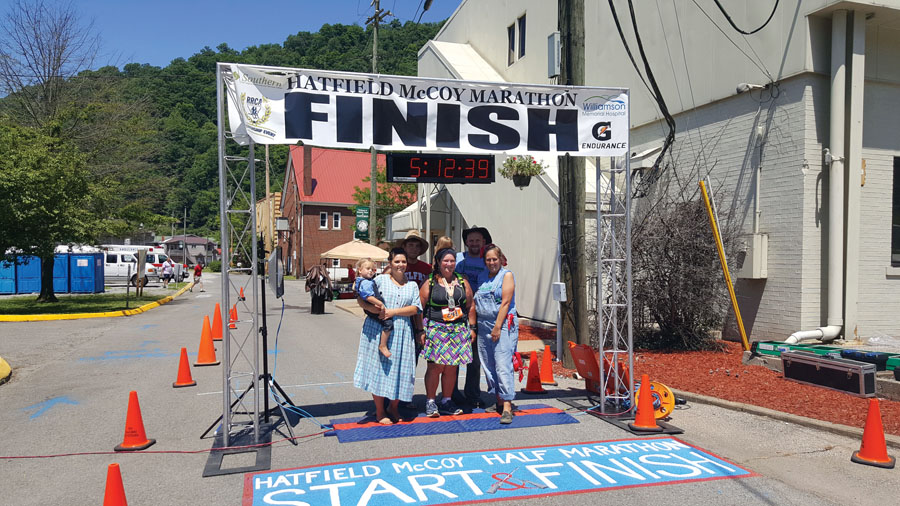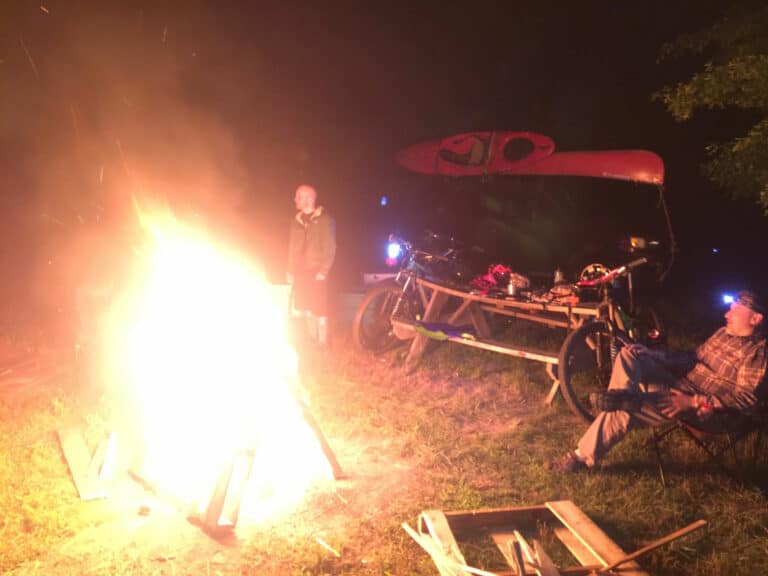The annual Hatfield McCoy Marathon may be the only race in the world that exists thanks to a stolen hog, a jilted lover, and a series of revenge murders.
Fortunately, the two families behind America’s most notorious feud buried the hatchet decades ago, and the people behind today’s Hatfield-McCoy events and attractions share the dispute’s history in good fun. “It’s all ancient history now,” says Natalie Taylor, executive director of the Tug Valley Chamber of Commerce based in Williamson, West Virginia. “The only thing people argue on now is the events of the feud itself.”
Ironically, the continuing legacy of the Hatfield and McCoy families’ well-known conflict, which threatened to tear this region apart in the late 1800s, may now be the area’s saving grace. With the region’s coal industry in a rapid decline, community developers and business leaders have drawn on this contentious past to attract tourism and fill the economic void.
The details of the longstanding conflict have faded and the facts of the matter depend on whom you ask, but the basics of the feud played out starting in 1865 at the easternmost tip of Kentucky and adjacent southwestern West Virginia, separated along the state line by the Tug Fork of the Big Sandy River. Conflicting Civil War allegiances, accusations of stolen property, ill-fated love affairs, drunken brawls, and a continuing need for vengeance spurred the dispute between patriarchs “Devil Anse” Hatfield and Randolph McCoy and their large extended families, which resulted in multiple deaths on each side until they declared a truce in 1891.
Stories of the feud laid low for more than 100 years until revitalization efforts began capitalizing on Hatfield-McCoy history to boost the local economy. In 1996, the West Virginia state legislature established plans to develop the Hatfield-McCoy Regional Recreation Area. In 1999, a federal grant from the Small Business Administration funded the Hatfield and McCoy Historic Site Restoration. A group of local historians augmented these efforts by developing self-led driving tours of the area.
The following year, more than 300 miles of Hatfield-McCoy Trails opened up to the public, and community organizers kicked off the first annual Hatfield-McCoy Reunion Festival and Marathon in June to bring together descendants from both sides and introduce the public to this colorful slice of local history.
“It’s a reunion festival, but we want everyone to come and have a good time with it,” says David Hatfield, the festival’s director and a “second cousin a few times over” to Devil Anse. “We do feud site tours, sack races, pie-eating contests, and bike decorating. We also do genealogy to see if you’re related to the Hatfields or McCoys.” However, the most popular event is undoubtedly the Hatfield-McCoy tug-of-war, which pits 10 members from each family against each other. “We used to do it across the Tug River,” Hatfield says, “but the bank washed out, so we’re doing it on dry land with a swimming pool in between this year. Somebody’ll get wet, though.”
The Hatfield-McCoy Marathon has also evolved through the years and now features the full marathon, two half marathons (one in each state), and a 5K. It starts and ends in Williamson, West Virginia, and passes by several significant feud sites while also climbing more than 600 feet in one mile and traversing a swinging bridge.
Each runner gets assigned to the Hatfields or McCoys, and each group competes against the opposing clan for the fastest combined time.
“People get into theme, too—some run in overalls,” says Alexis Batausa, president of the Tug Valley Road Runners. “The family at water stop 10 all dress up as hillbillies and bring out mules and piglets, and there’s a sign for the world’s tiniest horse near mile nine that always stops people.”
Fortunately, these efforts to draw feud tourists seem to be working. The festival and the marathon occurred on the same weekend for the first 15 years, but the conjoined event got so popular that area hotels couldn’t accommodate all of the attendees. They now are held on two different weekends.
This year, the marathon attracted nearly 1,100 runners. The Hatfield-McCoy Trails now stretch more than 500 miles across multiple counties and attract tens of thousands of riders per year. Curious history buffs peek in during all seasons to explore sites tied to the intriguing story.
At the fourth gathering of the reunion festival in 2003, more than 60 descendants from the two clans signed an official truce as a message of reconciliation and goodwill, and evidence of the families’ cooperation can be seen all throughout the region. The Tug Valley Chamber of Commerce’s leadership boasts two Hatfields and one McCoy, and numerous weddings over the past century-plus have united the two families.
“We all want to preserve and promote our history, and we’re working together now,” remarks David Hatfield. “One good thing that’s come of all this is that the Hatfields and McCoys have really united to save our area.”








